Observing double stars is a very popular aspect of astronomy and an area where amateurs can contribute greatly, as very few professional observatories make such observations these days.
Observational data is vital for increasing our understanding of stellar evolution, so amateurs can carry out real science as well as enjoying the wonderful sights.
If you're going to be taking time to view some of the wonderful double stars on offer in our night sky like Albireo, Mizar, Theta Tauri or Antares, or even a quadruple system like Almach, to name just a few, it'll pay to know what type of telescope is best for that purpose.
On the hunt for your first scope? Read our guides to choosing your first telescope and our pick of the best beginner telescopes.
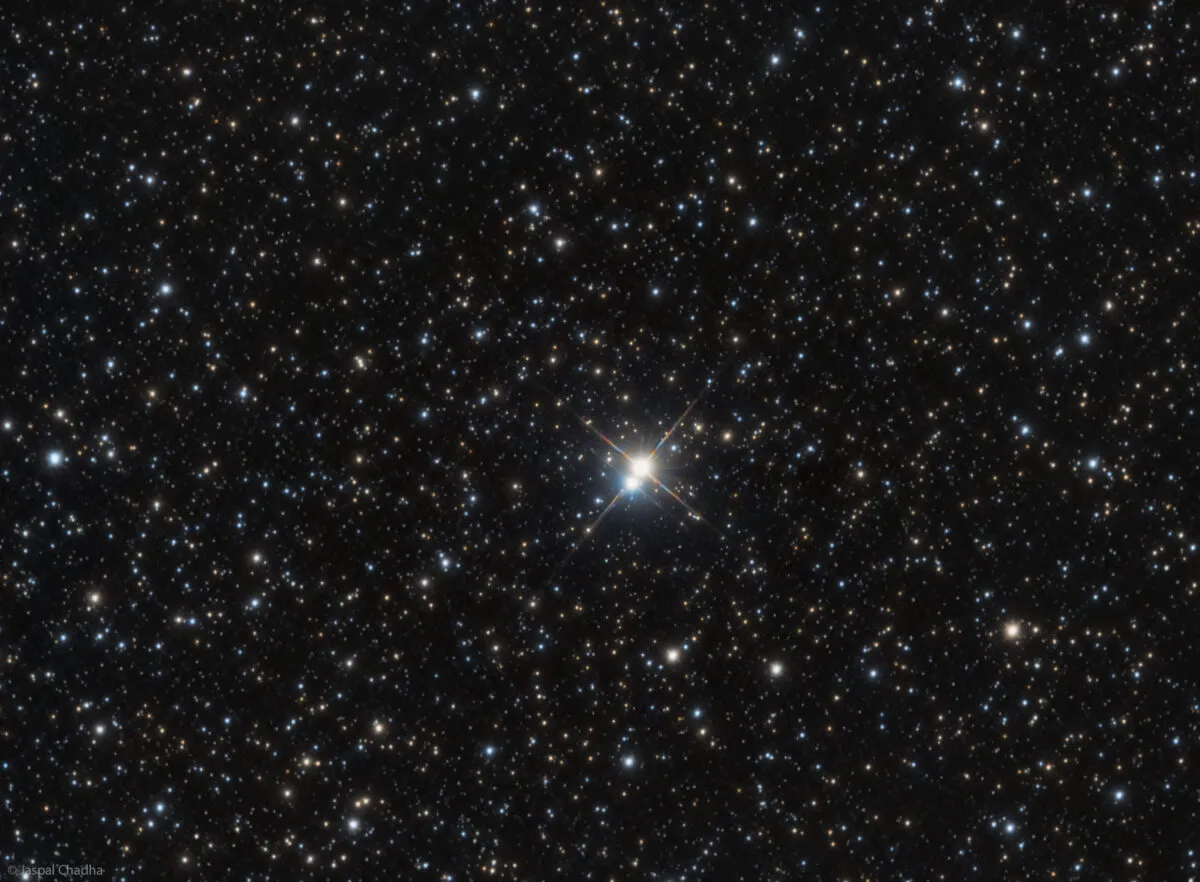
A 6-inch reflector, for example, will produce some great views of double stars but a good refractor is likely to give a better observing experience as there is no spider vane to create diffraction spikes, which can cause issues with very close doubles.
A long focal length refractor will give excellent views and make focus easier to achieve, but this needs to be combined with as large an aperture as you can afford.
Larger apertures will reveal fainter companions but, just as importantly, they will have a higher resolution allowing you to split closer doubles.
Long focal length refractors require a substantial mount to counter the effects of wind shear in particular.
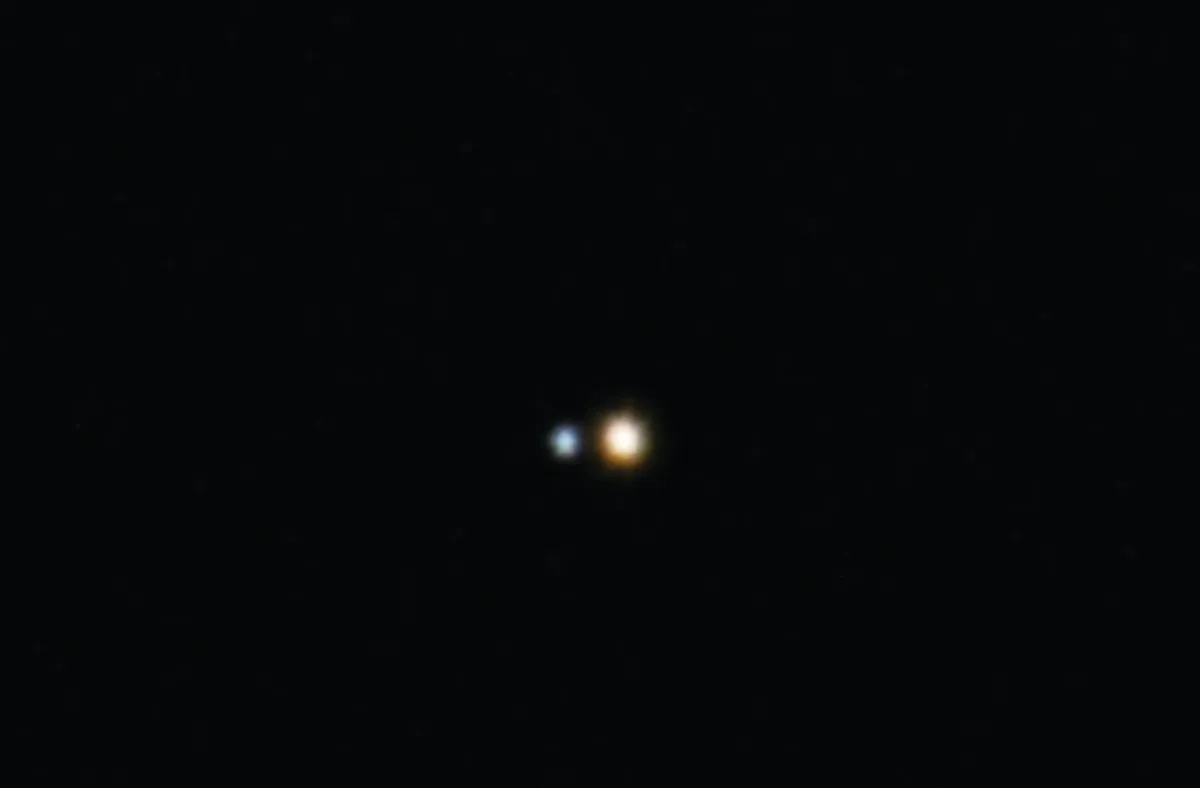
Unfortunately, large aperture refractors can be quite costly, so a very popular, lower-cost alternative instrument for double star observing is a 5-inch Maksutov-Cassegrain.
This instrument has a wide aperture and a long focal length of around 1,500mm in a short physical length and would be an excellent choice within your budget.
We've tested and reviewed a range of telescopes over the years, some of which are ideal for double star observing. Here's a selection of some of the best.
Best telescopes for observing double stars
Celestron 114LCM computerised telescope
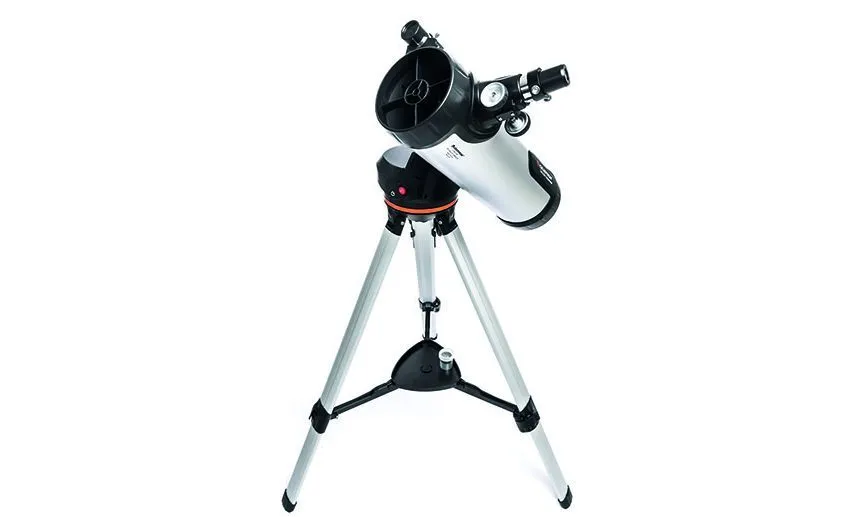
SQUIRREL_TEXT_13052200
The Celestron 114's NexStar+ LCM hand controller is a great addition to this great-value telescope, which would make a good first instrument for astronomy newcomers. The hand controller enables you to align and operate the telescope at the touch of a button and features a database of 4,000 targets to which you can instantly slew. This includes Solar System targets, Messier Catalogue, NGC and Caldwell Catalogue objects, along with double stars, variable stars and more.
We tested out the 114 LCM on Albireo (Beta (β) Cygni), a great late-summer/early-autumn target, and found the gold and sky-blue components of this striking double were clearly separated and very colourful.
Read our full Celestron 114LCM computerised telescope review.
Orion Optics VX8 f/4.5 Newtonian reflector
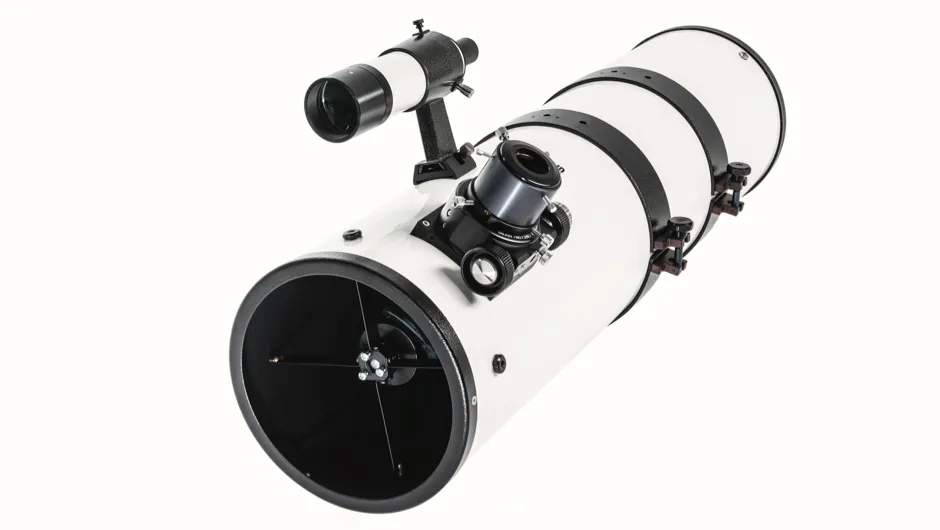
The VX8 from Orion Optics is another great starter telescope: it's relatively affordable as far as quality telescopes go, it's lightweight - making it easy to set up and good for travelling to dark sky sites in the hunt for double stars - and without accessories weighs just 7kg.
Included are a straight-through 8x50 finderscope, ACU-2S 2-inch (50.8mm) Crayford focuser with a 1.25- to 2-inch adaptor and a cooling fan at the base (it's important to keep your telescope cool).
To test the VX8's double star capabilities we used our 10mm eyepiece and swung round to double star Albireo. We were not disappointed; the gold and blue components both looked superb.
A tougher test, though, was Iota Cassiopeiae. This is a tight triple star and we were able to split it using our 25mm eyepiece and a 5x Powermate lens. However, it did require good seeing.
Read our full Orion Optics VX review.
Sky-Watcher Evostar 150ED DS-Pro refractor
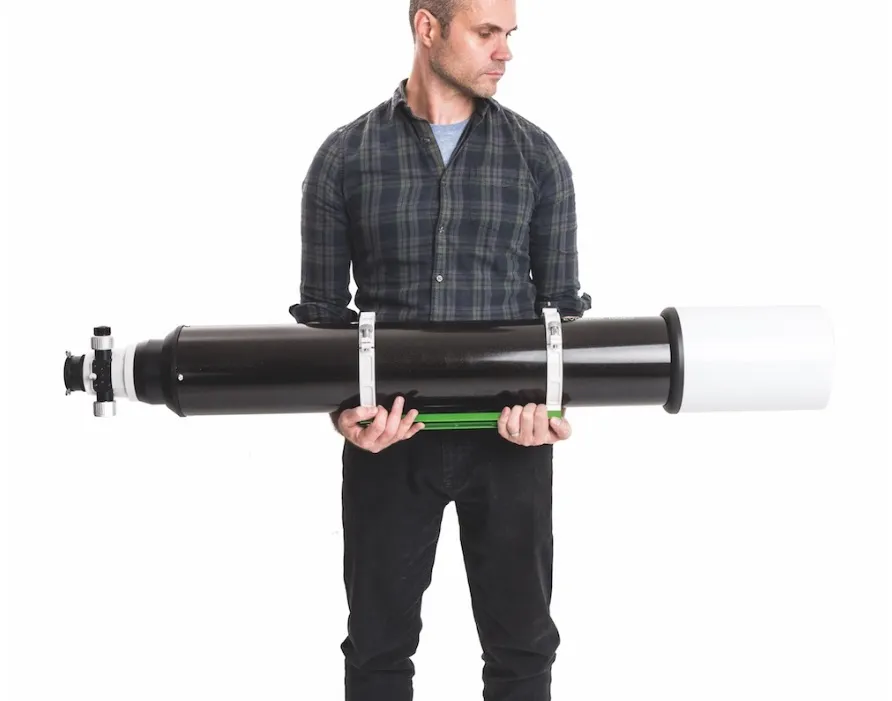
The Evostar 150ED is clearly at the more pricey end of the range of refractor telescopes on offer today, but it is an amazing instrument: a fantastic all-rounder that's great for planetary and lunar observing, deep-sky targets, astrophotography and, yes, double stars.
We tested the telescope across a range of targets and found on double stars the 150ED was a delight. We were able to observe very clean, wide splits for both Epsilon (ε) and Iota (ι) Cassiopeia.
At 533x we even managed to split the very close double Zeta (ζ) Herculi, which is extra tricky as the small companion resides in the first diffraction ring.
If you're looking for a telescope that can get you those tricky, tight doubles, this could be the one for you.
Read our full Sky-Watcher Evostar 150ED DS-Pro refractor review.
National Geographic 90mm automatic telescope
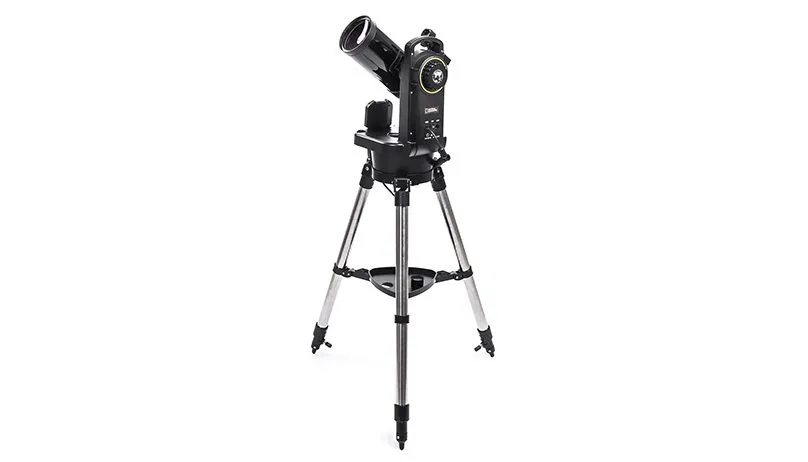
This National Geographic telescope may seem like a basic instrument to experienced practical observers, but it's a great option for beginners.
It features a computerised Go-To mount and comes with a handset controller offering a database of 272,000 celestial targets that you can automatically slew to, including deep-sky objects, planets, double stars and variable stars.
We tested out its double star capabilities on Albireo in Cygnus and found it was gorgeous, showing a great contrast between the sky blue and yellow-orange components.
Read our full National Geographic 90mm automatic telescope review.
Starbase 80 refractor and mount package
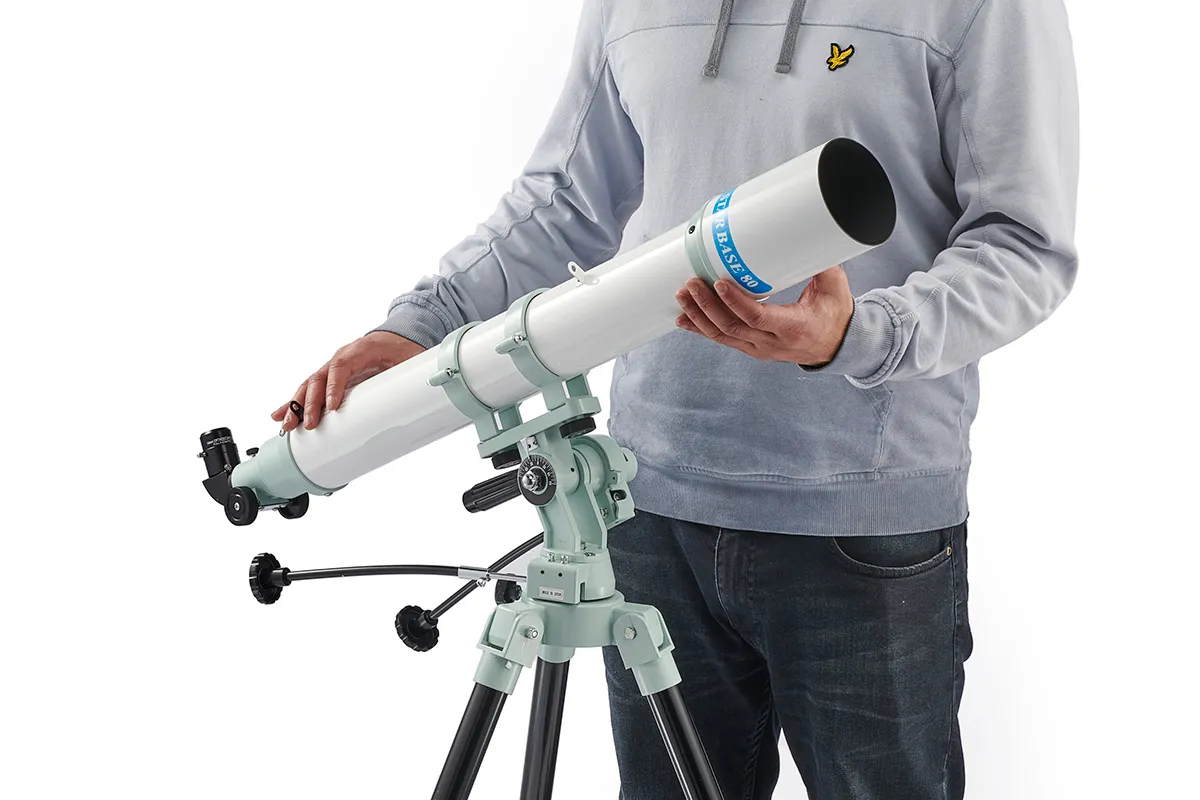
This all-in-one telescope and mount package is another great entry-level option for amateur astronomers.
During our test we found we were not only able to get good views of bright deep-sky targets like the Orion Nebula and the Pleiades but we were able to locate the central bulge of the Andromeda Galaxy and a good selection of bright double stars too.
Just south of the Orion Nebula, for example, is double star Iota (ι) Orionis, which we were able to split nicely. We then moved upwards to Sigma (ς) Orionis and could observe the main three stars and the fainter fourth with averted vision.
Our 9mm eyepiece gave us a crisp view of our double stars without pushing the magnification too far, so we would suggest adding these as upgrades to the system.
Read our full Starbase 80 refractor and mount package review.
William Optics Zenithstar 126 apo refractor
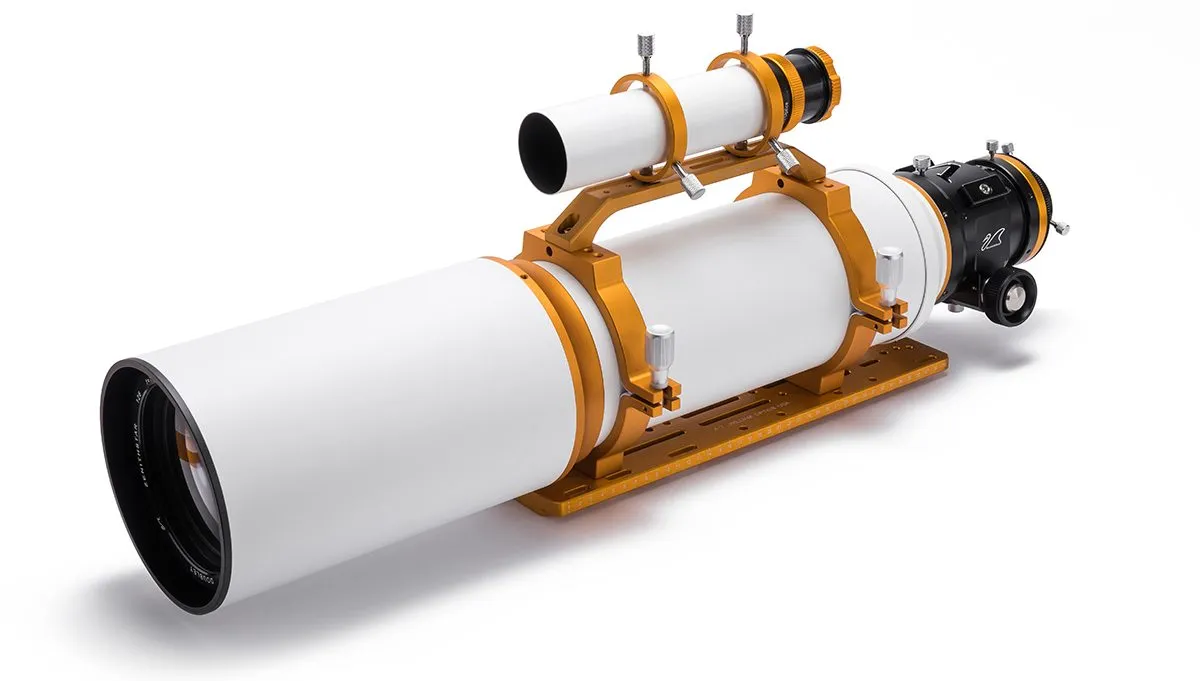
The Zenithstar 126 is another telescope that's at the pricier end of the scale, but it's really a formidable instrument.
The telescope boasts an impressive range of practical features. Anyone who's spent time with a range of telescope types will know that 4-inch refractors are at the sweet spot of being portable while able to perform very well. The ZS126 fits into this category.
It's solidly designed, weighs less than 10kg and with dew shield retracted is just 800mm long.
But on to double stars. During our tests, the telescope performed very well indeed, and we feel double star enthusiasts would certainly enjoy time on the Zenithstar 126. In particular, our views of Epsilon Lyrae were outstanding: a good, easy split of the stars with perfect diffraction patterns.
Read our full William Optics Zenithstar 126 apo refractor review.
Altair Astro Lightwave 66ED-R refractor
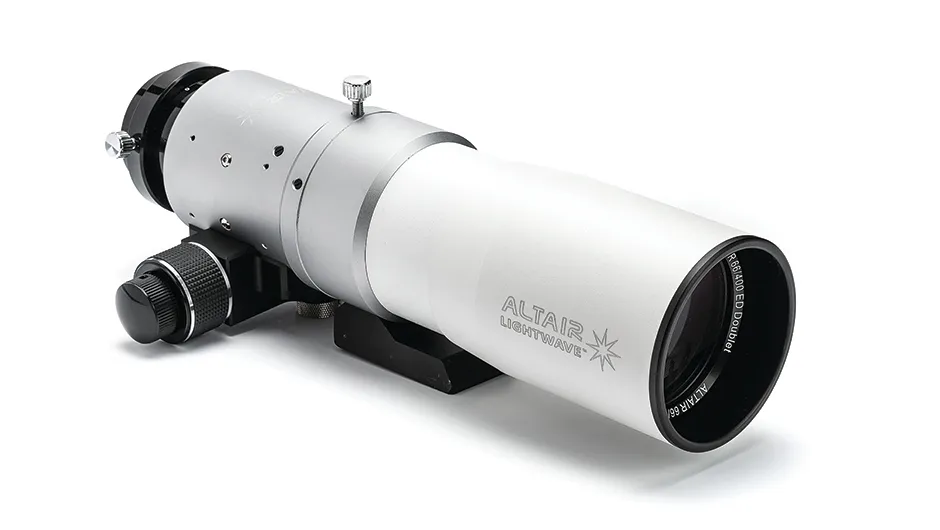
Altair Astro is known for its quality range of refractors, and the 66ED-R is a great addition to its lineup.
Altair suggests that the theoretical maximum magnification of the scope is 133x using a 3mm eyepiece, but we used a 10mm eyepiece and 5x Powermate to give the equivalent of a 2mm eyepiece (200x magnification) and were able to split Epsilon Lyrae, the ‘Double Double’,into its four constituent stars.
Throughout our testing we found that double stars were a treat to observe with the 66ED-R and there is a wealth of them in reach of the telescope, like for example Albireo (Beta Cygni), 17 Cygni and Nu Draconis.
Indeed, with low magnification many will appear as a single star, but push the magnification up and you will find the 66ED-R gives you great views.
Read our full Altair Astro Lightwave 66ED-R refractor review.
Sky-Watcher Star Discovery P150i Wi-Fi telescope
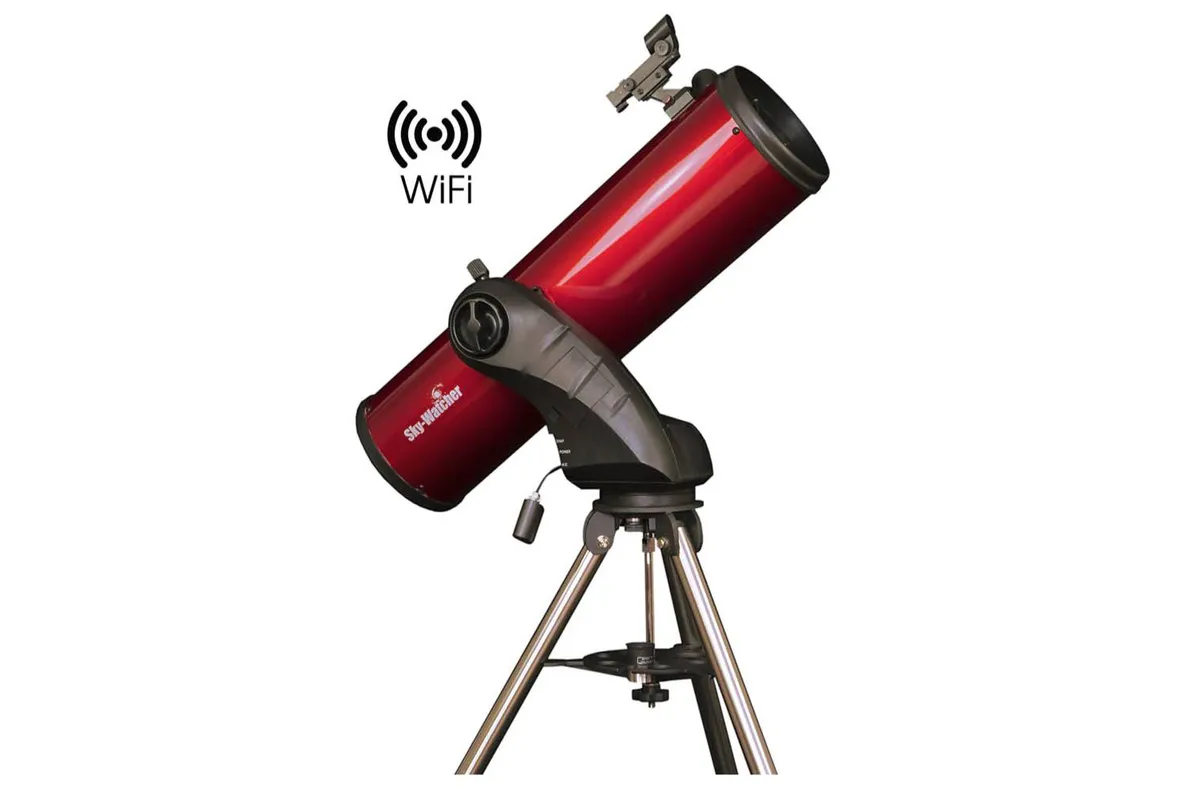
SQUIRREL_TEXT_13052422
The Star Discovery P150i Wi-Fi telescope is a great instrument for those who like a bit of tech and gadgetry in their observing. Switch it on, connect to it with your smartphone over Wi-Fi and then use the SynScan app to reach a range of targets at the push of a button.
The included 25mm eyepiece provided a quality field of view in our testing, with Rigel (Beta (β) Orionis) as sharp across 70% of the view.
We wanted to test how it handled double stars so we selected Albireo (Beta (β) Cygni) and were greeted with a pin-sharp view of the golden and blue pair, nicely separated. Swapping to the 10mm eyepiece, we had an even better view, with a stronger contrast of colours on display.
Read our full Sky-Watcher Star Discovery P150i Wi-Fi telescope review.
Celestron NexStar 8SE Schmidt Cassegrain
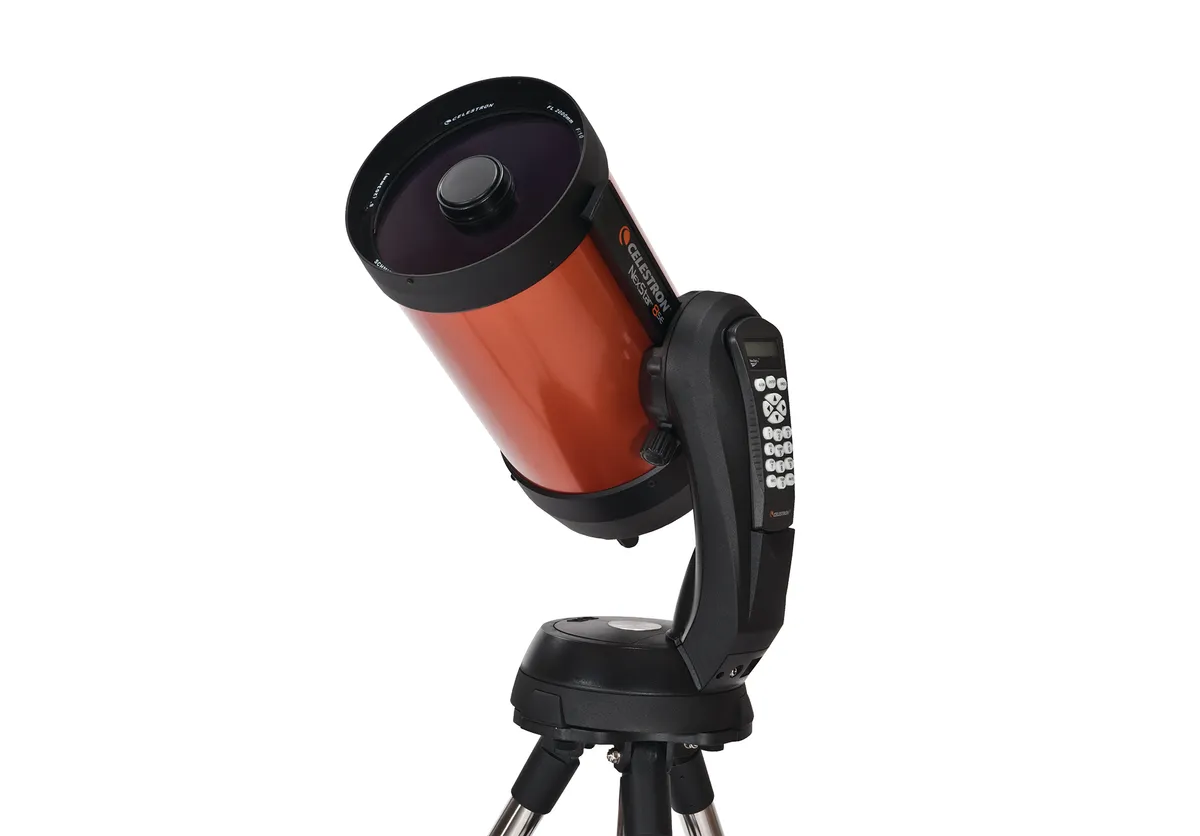
SQUIRREL_TEXT_13052142
Celestron Schmidt Cassegrains are hefty, impressive-looking instruments. The NexStar 8SE is a very intuitive, quality instrument that we would recommend to beginners and experienced practical astronomers alike.
During testing we found it was very easy to use and had a great few evenings observing the night sky. It's a solid performer and little wonder why the C8 continues to thrive in the marketplace.
The 8-inch, f/10 Schmidt-Cassegrain optics offer Celestron’s StarBright XLT coatings, which we found improves light transmission and provided great views of our targets with the supplied 25mm E-Lux Plössl eyepiece. Stars were sharp across 85% of our field of view and we were able to split even very close faint double stars using high magnification.
Read our full Celestron NexStar 8SE Schmidt Cassegrain review.
Sky-Watcher SkyMax 180 Pro Maksutov-Cassegrain
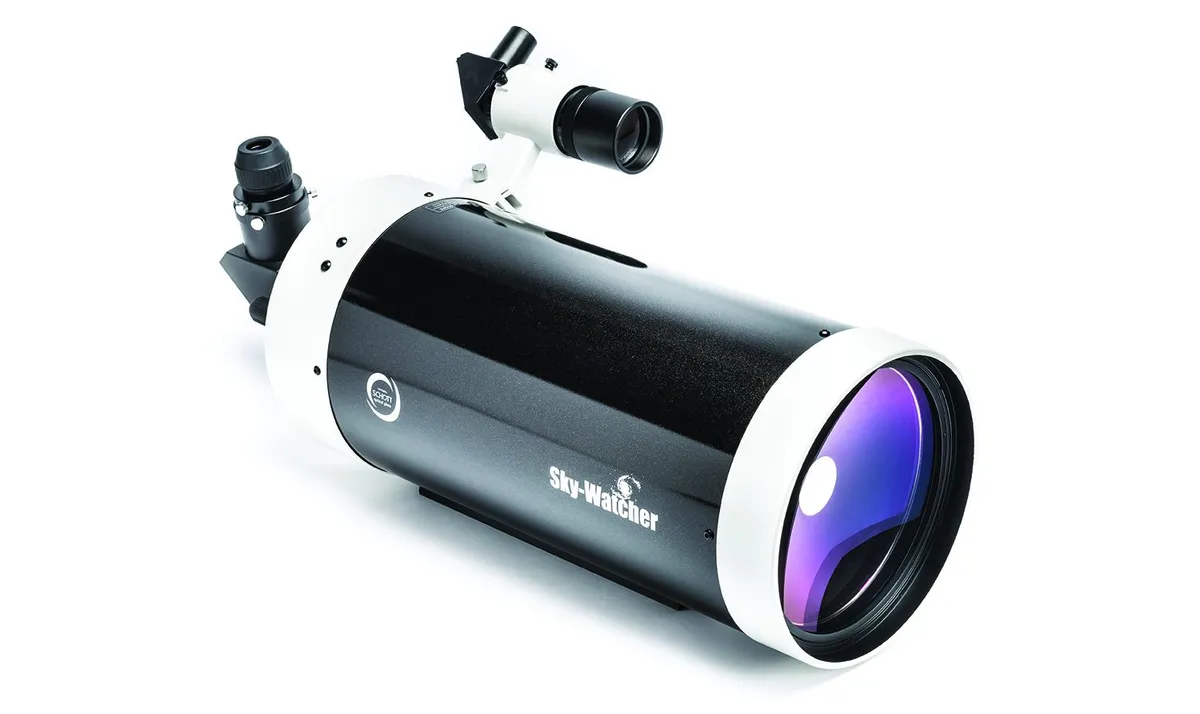
Despite its seemingly modest 7-inch mirror, the SkyMax 180 Pro really punches above its weight. A 2,700mm focal length is housed in a tube only 500mm long and with a tube width of 216mm, it's a pretty compact instrument for its observing power.What's more, it weighs just 7.8kg, so is relatively lightweight for its size.
Using the 20mm eyepiece we found our view of bright star Altair (Alpha Aquilae) was very sharp across almost 90% of the view, with just a slight distortion in the star visible at the edges.
So we turned to double star Albireo, and found our view a real treat in the 20mm eyepiece, with the golden yellow primary and pale sky-blue companion clearly visible. We were also able to split tight triple star Iota Cassiopeiae.
Read our full Sky-Watcher SkyMax 180 Pro Maksutov-Cassegrain review.
Bresser Messier NT-150S reflector review
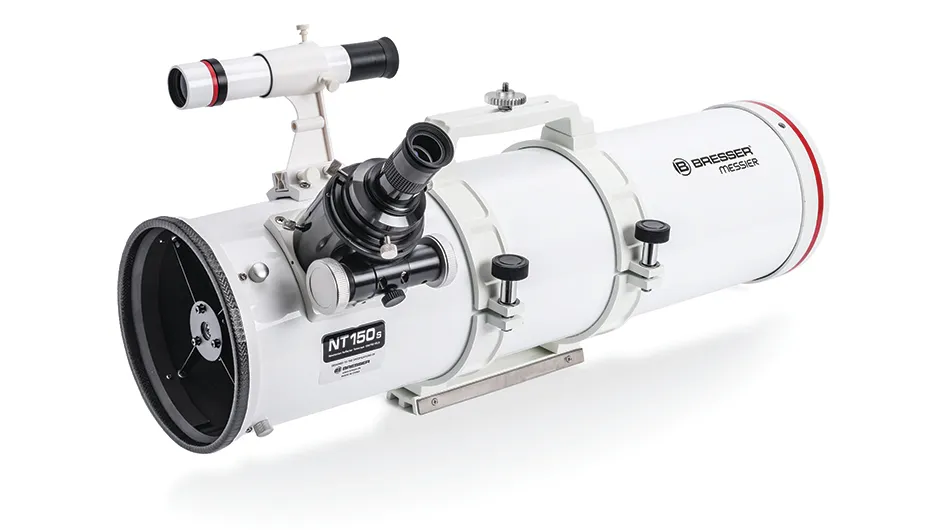
SQUIRREL_TEXT_13061027
The Bresser Messier NT-150S is a well-performing telescope that comes in a nice bundle including a 6x30 finderscope, a focuser extension tube, a piggyback camera attachment, a 2- to 1.25-inch adaptor for the focuser and a 26mm Super Plössl eyepiece.
We used the 26mm eyepiece to observe the Sword of Orion asterism in its entirety, from the star cluster NGC 1981 down to Iota Orionis.The latter is a double star and using a 2x Barlow lens in conjunction with the 26mm eyepiece, we found we could easily split it.
As part of our desire to push the optics of the NT-150S, we moved to triple star Beta Monocerotis and with our own 9mm eyepiece and the 2x Barlow lens we could see all three pale blue stars in a lovely tight arc.
Read our full Bresser Messier NT-150S reflector review.
Orion StarSeeker IV 6-inch Go-To Maksutov-Cassegrain
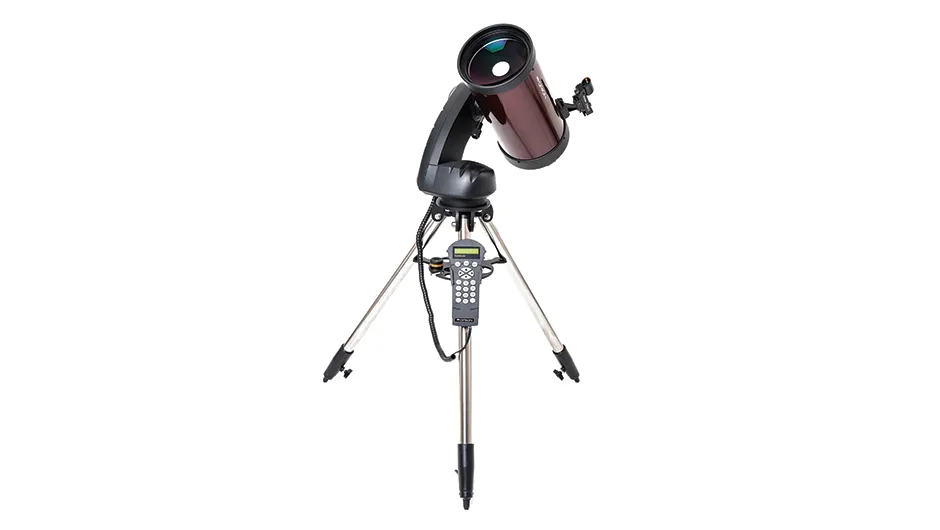
SQUIRREL_TEXT_13052855
The Orion StarSeeker IV is a complete altaz Go-To system that includes a 6-inch telescope, a Go-To mount, a stainless steel tripod, 2 x 62º apparent field of view eyepieces (23mm and 10mm), a star diagonal, a 2- to 1.25-inch adaptor and an EZ Finder II reflex sight. It really is a complete setup.
We found the 78x magnification of the 23mm eyepiece gave good views of a range of double stars. We observed and were able to split Algieba in Leo into its orange and gold components. Castor appeared as a pair of white stars of slightly unequal brightness. Using the 10mm eyepiece enabled us to split triple star Iota Cassiopeiae into its three components.
Read our full Orion StarSeeker IV 6-inch Go-To Maksutov-Cassegrain review.
Sky-Watcher Heritage 150P Flextube Dobsonian
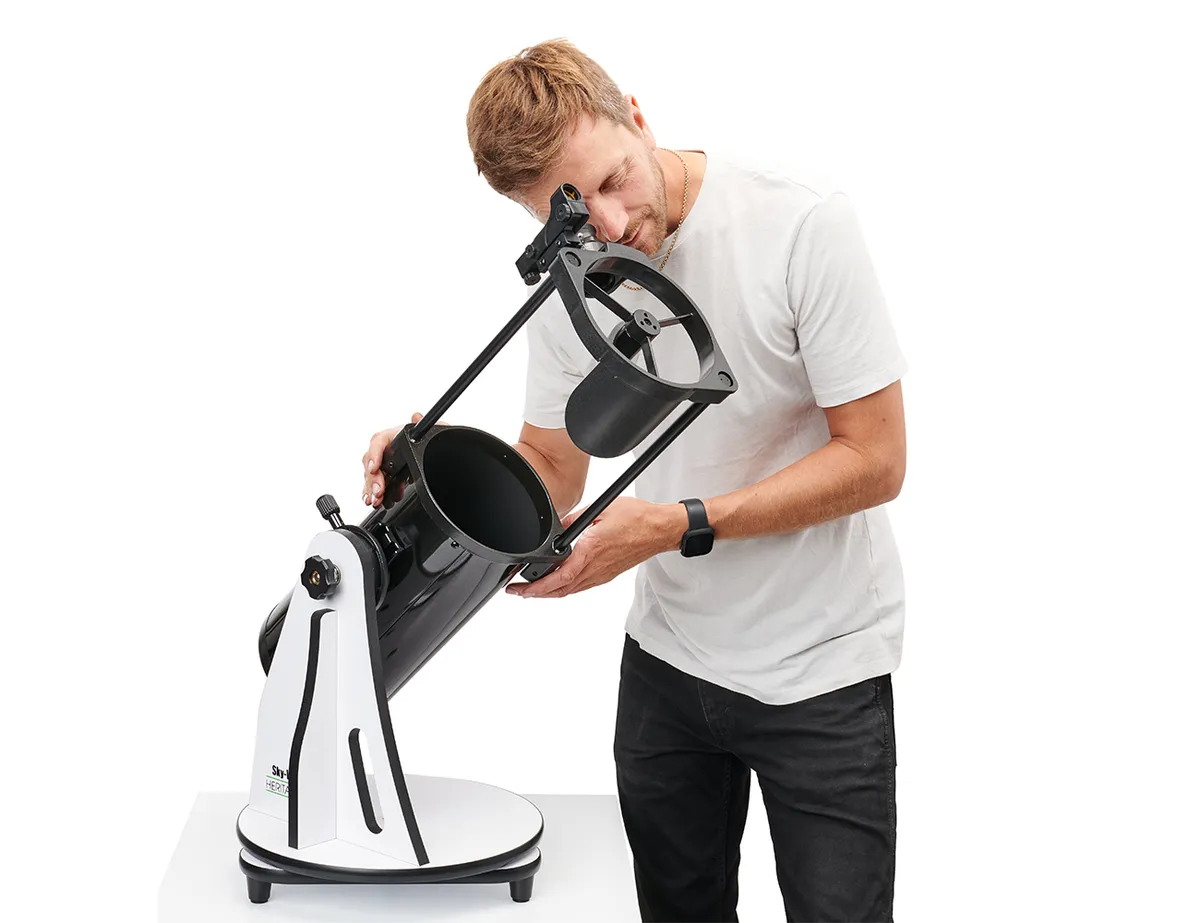
Tabletop telescopes offer a simple, affordable way of observing the night sky and are great for beginners. Some of the best also offer more observing power than you might imagine.
The Heritage 150P comes preassembled in a presentation box, with smaller boxes for the eyepieces and red dot finder.
During our testing we started off observing clusters M34, M103 and M52, before turning to Albireo. It was split well with the 25mm eyepiece, but we found the colours were much more vivid with the 10mm. Indeed, with the 10mm eyepiece we were also able to split the famous Double Double star Epsilon Lyrae.
Read our full Sky-Watcher Heritage 150P Flextube Dobsonian review.
Altair Astro Wave Series 130 EDT apo refractor
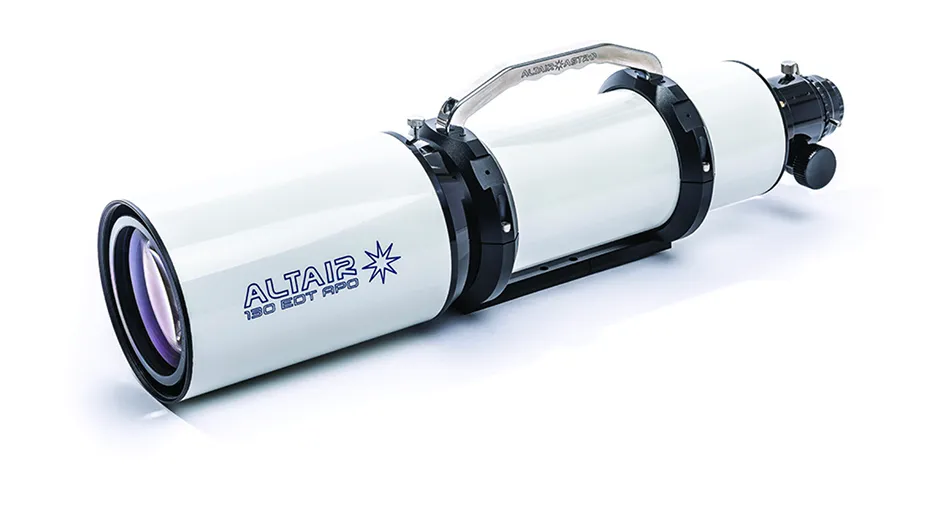
With an aperture of 5 inches and a focal length of 905mm, Altair Astro’s Wave Series 130 EDT is certainly a large refractor.
The 130 EDT comes in a lightweight aluminium flight case, making it suitable for transporting to dark-sky sites.Attached to the top of the telescope's tube rings is a carrying handle, adding to its portability.
Double star Albireo in Cygnus looked fabulous at various magnifications and the Garnet Star, Mu Cephei, showed real vivid colour.
We were also able to split the Double Double, Epsilon Lyrae, and noted a distinct dark space between the stars. This looked beautiful through our 5mm eyepiece.
In general, star shapes through the 130 EDT were superb out to about 85% of the field of view.
Read our full Altair Astro Wave Series 130 EDT apo refractor review.
